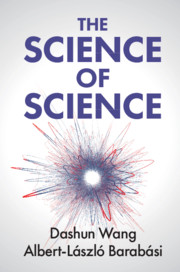Book contents
- The Science of Science
- The Science of Science
- Copyright page
- Dedication
- Contents
- Acknowledgements
- Introduction
- Part I The Science of Career
- 1 Productivity of a Scientist
- 2 The h-Index
- 3 The Matthew Effect
- 4 Age and Scientific Achievement
- 5 Random Impact Rule
- 6 The Q-Factor
- 7 Hot Streaks
- Part II The Science of Collaboration
- Part III The Science of Impact
- Part IV Outlook
- Book part
- References
- Index
1 - Productivity of a Scientist
from Part I - The Science of Career
Published online by Cambridge University Press: 07 February 2021
- The Science of Science
- The Science of Science
- Copyright page
- Dedication
- Contents
- Acknowledgements
- Introduction
- Part I The Science of Career
- 1 Productivity of a Scientist
- 2 The h-Index
- 3 The Matthew Effect
- 4 Age and Scientific Achievement
- 5 Random Impact Rule
- 6 The Q-Factor
- 7 Hot Streaks
- Part II The Science of Collaboration
- Part III The Science of Impact
- Part IV Outlook
- Book part
- References
- Index
Summary
We introduce the role that productivity plays in scientific success by describing Paul Erdös’ exceptional productivity. How does Erdös’ productivity measure up to other scientists? Is the exponential increase in the number of papers published due to rising productivity rates or to the growing number of scientists working in the discipline? We find that there is an increase in the productivity of individual scientists but that that increase is due to the growth of collaborative work in science. We also quantify the significant productivity differences between disciplines and individual scientists. Why do these differences exist? To answer this question, we explore Shockley’s work on the subject, beginning with his discovery that productivity follows a lognormal distribution. We outline his hurdle model of productivity, which not only explains why the productivity distribution is fat-tailed, but also provides a helpful framework for improving individual scientific output. Finally, we outline how productivity is multiplicative, but salaries are additive, a contradiction that has implications for science policy.
Keywords
- Type
- Chapter
- Information
- The Science of Science , pp. 7 - 16Publisher: Cambridge University PressPrint publication year: 2021



